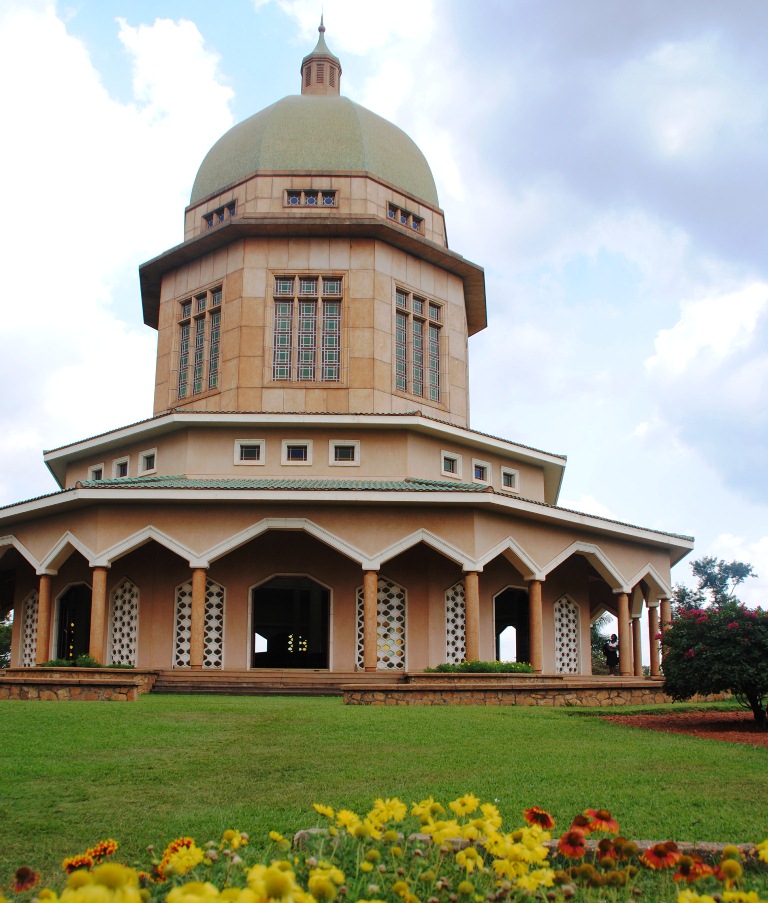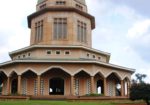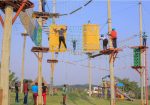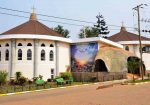Bahai House Of Worship It is called the ‘Mashriqu’I-Adhkar’, the Persian translation for ‘the dawning place of the praise of God’. It is also the Mother Temple of Africa. Built about 50 years ago on Kikaya Hill, four miles from Kampala on the Gayaza Road, the Bahai Temple soars above every other landscape.
In clear view of Kikaya Hill, from as far as 3km away in all directions, the soaring temple, perched on the hill’s crest, blends with the scenic view that projects harmony and joy. Arranged in rows, the exuberant flowerbeds spread out to form columns of gardens that widen from top to the foothill. It is a constant reminder of the proclaimed Christian imagery of the narrow path to heaven’s gate. The peace and quite in the lush gardens beckons hundreds to always travel to Africa’s only Bahai Temple. Each continent has got only one Bahai Temple and the decision to locate it here, turned Uganda into Africa’s spiritual heart for the Bahai.
The gardens are open to all. But while there, strict Bahai principles must be observed. Loud music, picking of flowers, immoral behavior, drinking of alcoholic beverages and use of intoxicating drugs are forbidden. Baha’ullah, the founder of Bahai faith, vehemently wrote against them. Hundreds of tourists on holiday come to picnic, lounge and gracefully wander through the peaceful gardens for long hours, the tourists constantly return as if seeking spiritual refuge from this mystical world marred by inhuman antics like savagery, immorality, prejudice, hatred and jealousy. While seeking for peace and harmony in the beautiful gardens visitors also find heaven and make a covenant with God.
According to Baha’u’llah’s writings, heaven and hell are not places but states of being reached when someone does something good and bad respectively. To the Bahai, heaven is the presence of spiritual qualities, while hell is the lack of these qualities, or imperfection. The sublime architectural design of the Temple is not merely a marvel to her visitors and people who catch sight of it from a distance. Its design is based on a spiritual vision. The nine doors that stand open during prayer and sessions of meditation speak of the all-embracing nature of God. All are to usher in people to meet and adore God under this dome that symbolizes His divine uniting force. Built in harmony with the Bahai principles, the 124 feet high and 44 feet diameter temple has because green conical dome shape. The interior screams with an air of piety and natural respect.
Nine big pillars and 27 smaller ones support the temple up right. Different countries contributed various building materials as if to echo Baha’u’llah’s crusade for university. The green dome is made of tiny glazed mosaic tiles from Italy, while the lower roof tiles are from Belgium. The walls are of pre-cast stone quarried in Uganda. Steel and window frames and fittings are from Britain. The colored glass was brought from Germany. The timber used for making the doors and benches was from Uganda.
After four dedicated years of building, this venerated symbol of faith was successfully opened to the public on January 15, 1962. In the evenings, the delightful songs of the birds charm the lounging tourists and visitors in the garden. Like a choir of angels, they sweetly sing proclaiming the glorious destiny that awaits the human race.















3 Comment
Amelia kapinga beya, 2019-07-21 at 11:03 AM
I want to serve there
Itsmorning, Manchester, 2016-12-28 at 11:22 AM
I lived in Kampala more than 20 years ago and the Baha’i temple stood alone on top of a hill far far away….. Now it is is firmly within the urban sprawl but the temple sits in enough grounds that you would hardly know about the hectic life going on outside. A great place just to walk around and think
Saurabh, 2015-08-06 at 11:20 AM
Bahai temple good looking place with very clean grounds, we went with the boda boda tour so we got a lot of information and history out of it